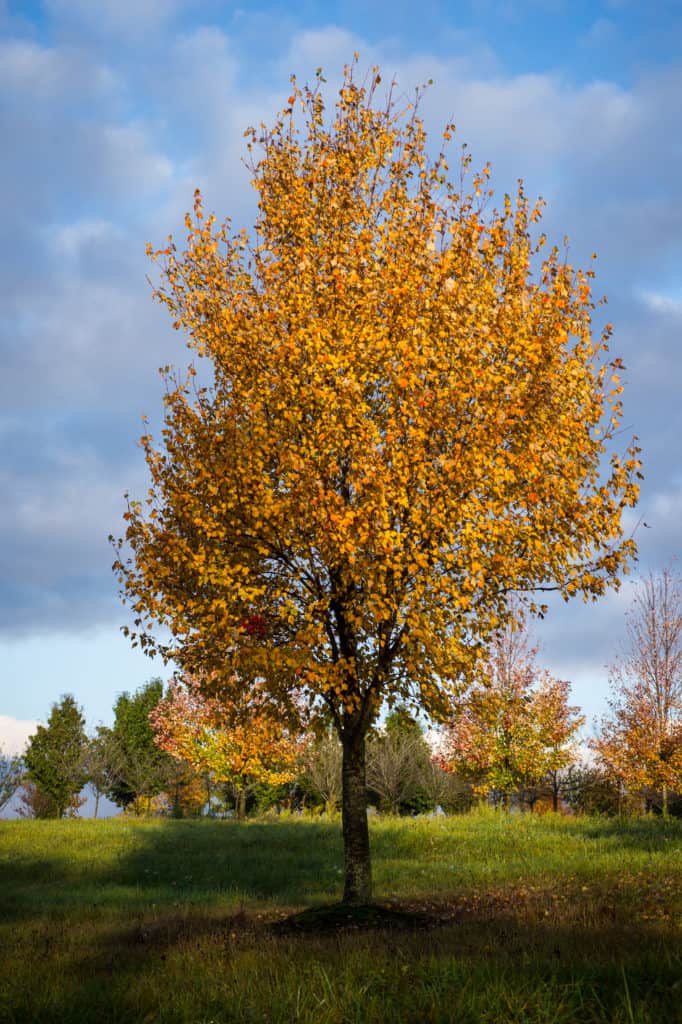PEAK WEEK
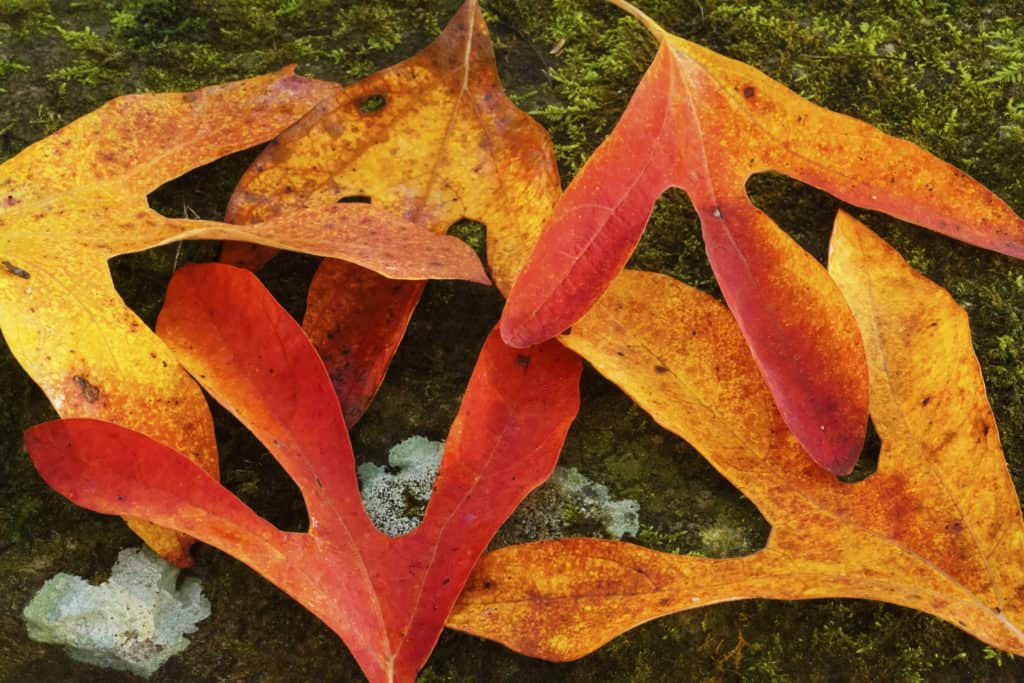
Fall color doesn’t get any better than right now
By Kathy Knotts
After a summer of temperatures well above normal and one of our warmest Octobers since the 1940s, we have finally found ourselves in the thick of autumn, and the high point of changing leaf colors.
Despite some recent storms and whipping winds, fall foliage is now at its peak along the Bay, according to the weekly report from Maryland Department of Natural Resources (DNR).
“The fall foliage this year has been a moving target,” the report states. “And we find ourselves entering November with some lackluster conditions. We are generally seeing a pattern from western Garrett County in the past peak stage to lots of green with pockets of color in far eastern Maryland. With the recent wind and rain, we’re seeing an end to prime foliage colors in most of the state mainly because of leaf drop.”
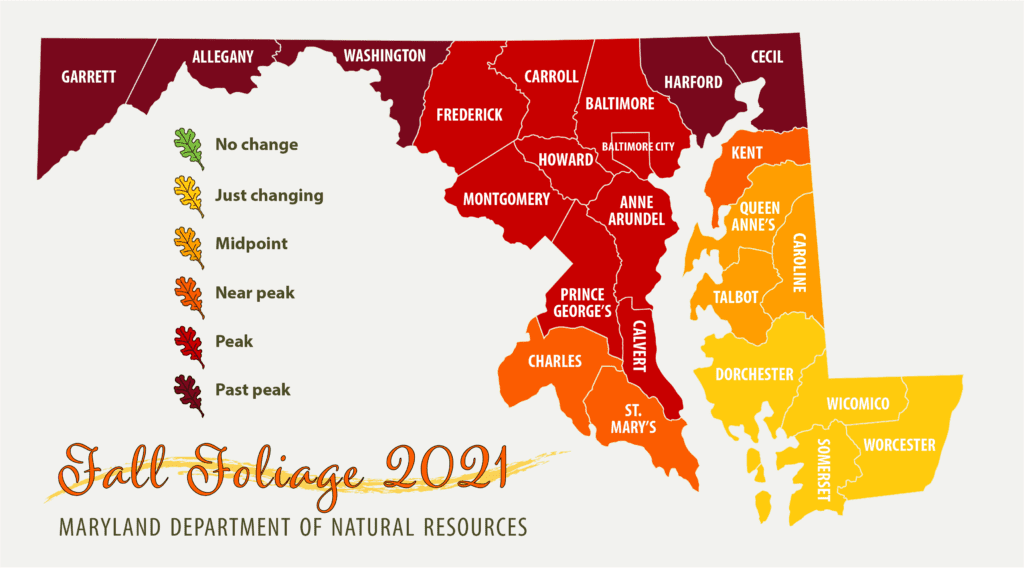
Summer’s scorch has left a lasting mark on the season’s red, yellow, and orange leaves, says Lou Meyer, a certified arborist with Davey Tree in Annapolis. Meyer notes “at-peak means most trees have little green left and the leaves have started to change, but the colors may not be as vibrant as years past.
“The colors are somewhat dull and behind schedule,” he says. “We are seeing aggressively later fall foliage every year, this year even more so because of that hot long summer into fall transition.”
Sunny days and cool nights are necessary for optimal fall colors, says Meyer. “Trees photosynthesize when the sun is out, and they are making sugars in the leaves. If it is still warm at night, the tree is going to continue moving fluids through its vascular system, the cambium. If it is cool at night, the leaves will restrict that flow, hold on to those sugars and that’s what allows for more colorful pigment. We may love warm sunny days but warm at night means the fall color will not be as spectacular.”
A later fall may not be readily obvious, as it’s shifted just by a matter of days over the past 40 years, says Meyer, but climate change means the colorful tree species we look to each fall may only be found to our north in future generations. “Long term, say the next 100 years, trees like crepe myrtles will be seen in Philly or New York. In New England, all the red and sugar maples will start showing up farther north, like in southern Vermont. A traveling leaf peeper may have to go farther north [in the future].”
Hit the Road
To catch the last of fall’s beauty here on the Bay, travel the Roots & Tides scenic byway, as outlined below by Visit Maryland. From bayside towns to fishing communities, this byway showcases the history and culture of this region while taking you through both rural farmland and waterfront towns.
Total drive time is about two hours (more with stops) and takes you 47 miles from the busy streets of Annapolis to scenic, quiet roads that lead to Plum Point.
ANNAPOLIS TO FAIRHAVEN
Including MD 2, MD 253, MD 468, MD 256 & MD 423
Begin in ANNAPOLIS, where there are more 18th-century buildings than any other city in America. Take in some history while glimpsing views of trees dotting the bluffs of the Severn River. Visit the MARYLAND STATE HOUSE, which served as the nation’s capital in 1783, and the BANNEKER-DOUGLASS MUSEUM to learn about the area’s African American heritage. Also available are guided walking tours of the U.S. NAVAL ACADEMY, featuring glimpses of a midshipman’s life and a history that dates back to Revolutionary War hero John Paul Jones. Take a tour with WATERMARK JOURNEY to discover the Chesapeake’s heritage. Finish up with a delicious seafood dinner or unwind at a local pub.
Head south into EDGEWATER and tour HISTORIC LONDON TOWN AND GARDENS, where archaeological digs have unearthed artifacts dating back to the 18th century. Tour the Woodland and Ornamental Gardens and reconstructed colonial buildings are also located on the 23-acre property. Keep an eye out for the site’s winter-blooming camellias.
Many sites along this byway are part of the Chesapeake Bay Gateways Network, which connects visitors to history, culture and recreation along the bay and its tributaries. One official gateway is the SMITHSONIAN ENVIRONMENTAL RESEARCH CENTER, which encompasses 2,800 acres of fall-color forestland, cropland, pasture, freshwater wetlands, tidal marshes and estuaries. Heading down Muddy Creek Road from SERC, the roads are lined with forest on both sides. Nearby is another Chesapeake Bay Gateway, a restored waterman’s cottage on the quiet peninsula of Shady Side known as the CAPTAIN SALEM AVERY MUSEUM.
FAIRHAVEN TO BREEZY POINT BEACH
Including MD 423, MD 261 & MD 263
For a quiet, relaxing drive, head south into Rose Haven and the twin beach towns of NORTH BEACH and CHESAPEAKE BEACH. As you drive from Rt. 2 into Rose Haven, you’ll pass mature trees sporting vibrant colors and rolling farmland. The road then opens up to showcase waterfront views. Views of boats heading in and out of Herrington Harbour South marina greet you as you make the turn that will take you from Anne Arundel into Calvert County. Quaint houses dot the shoreline. As you drive across the bridge that leads into the town of North Beach, you’ll pass marsh lands which feature an unobstructed view of the Bay and autumn’s hues reflected along the shoreline.
In North Beach, walk the Wetlands Overlook Park or through the Sunrise Garden. In Chesapeake Beach, walk the Rail Trail and the newly renovated Chesapeake Beach Railway Museum, which is housed in an 1898 railway station and contains exhibits about the old Victorian resort and amusement park that operated there.
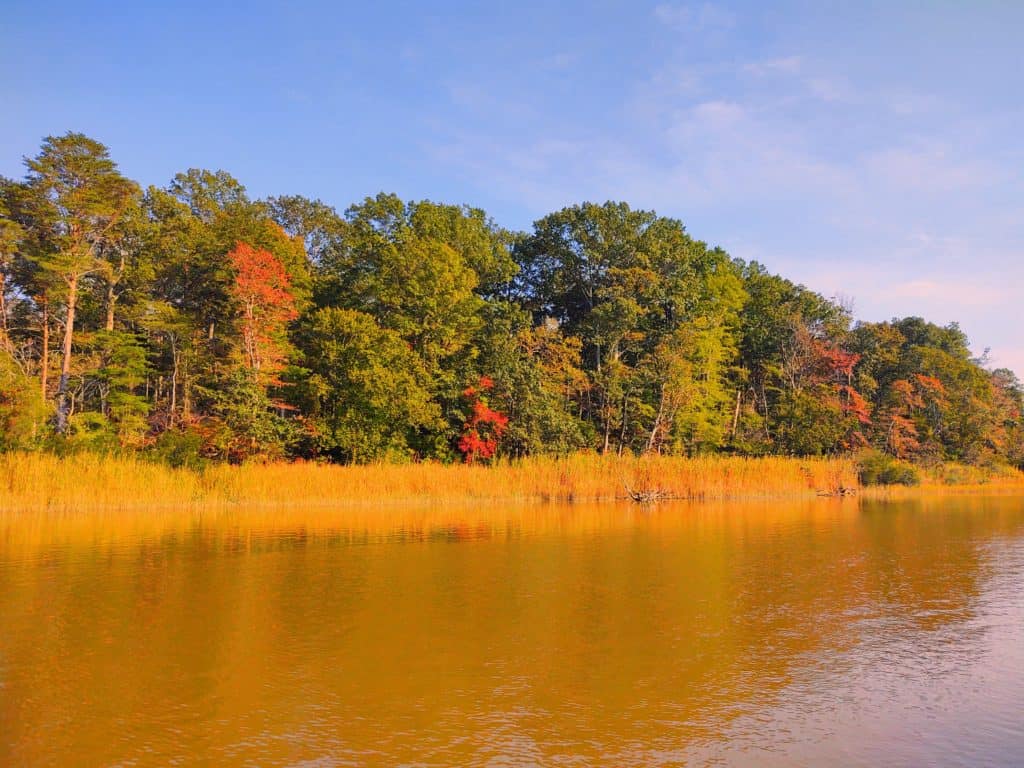
Side Trips
From here you can head south to Plum Point, or turn inland to connect with the STAR-SPANGLED BANNER BYWAY.
“It’s a little south of the actual byway, but Kings Landing Park in Huntingtown, is great for fall color,” recommends Hilary Dailey, tourism specialist for Calvert County.
If you have time to explore more of Calvert County, head to Lower Marlboro Wharf in Owings or to Battle Creek Cypress Swamp and Biscoe Gray Heritage Farm in Prince Frederick. In Prince Frederick you will find Running Hare Vineyard and at the cypress swamp you can get a look at centuries-old cypress trees along a boardwalk trail. Or head over to the trails on a preserve owned by the American Chestnut Land Trust (See Fall in the Forest).
Happy, Healthy Trees
Before you hit the road, take a good look around the neighborhood. Some great fall foliage could be right in your own yard.
Meyer recommends a few things to keep trees on your own property healthy and vibrant all year long. Throughout the summer, watering is key. “A mature tree needs one to two inches a week,” he says. “If it’s not raining, take a screwdriver and stick it in the ground. If you can slide it in easily your trees are getting enough water.”
He also encourages people to fertilize their trees. “They are living beings, just like we need our vitamins and proteins, they need nitrogen, phosphorus, potassium and micronutrients. A professional arboricultural firm can help you get them the nutrients they need.”
His favorite trees for fall color are black gums, which are a Maryland native with a “bright, fire engine red,” sugar maples for bright orange color, red maples for their red foliage, and sweetgums, which produce a variety of fall colors.
Trees are great, says Meyer. “They are extraordinarily important and dynamic to our wellbeing as humans.”

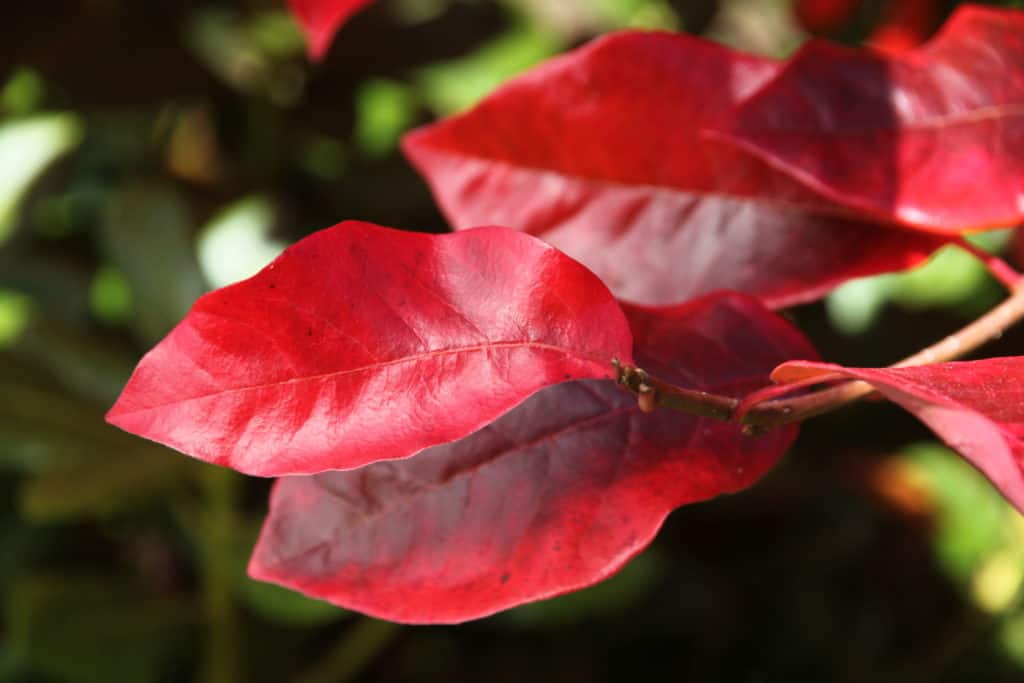
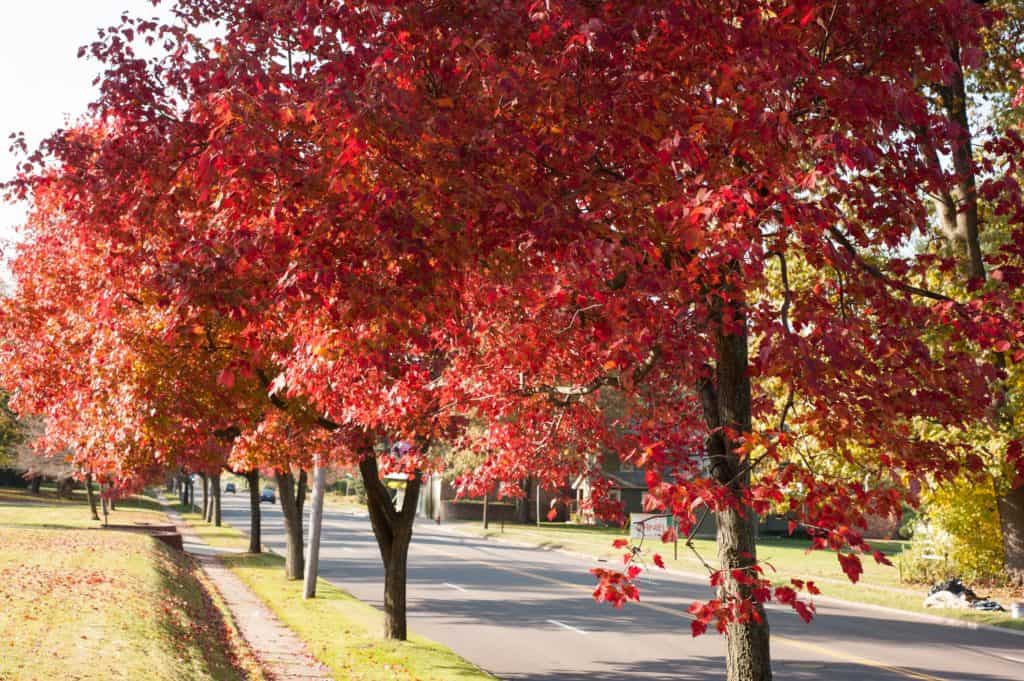


Red Maple (Acer rubrum) Leaves in Fall 